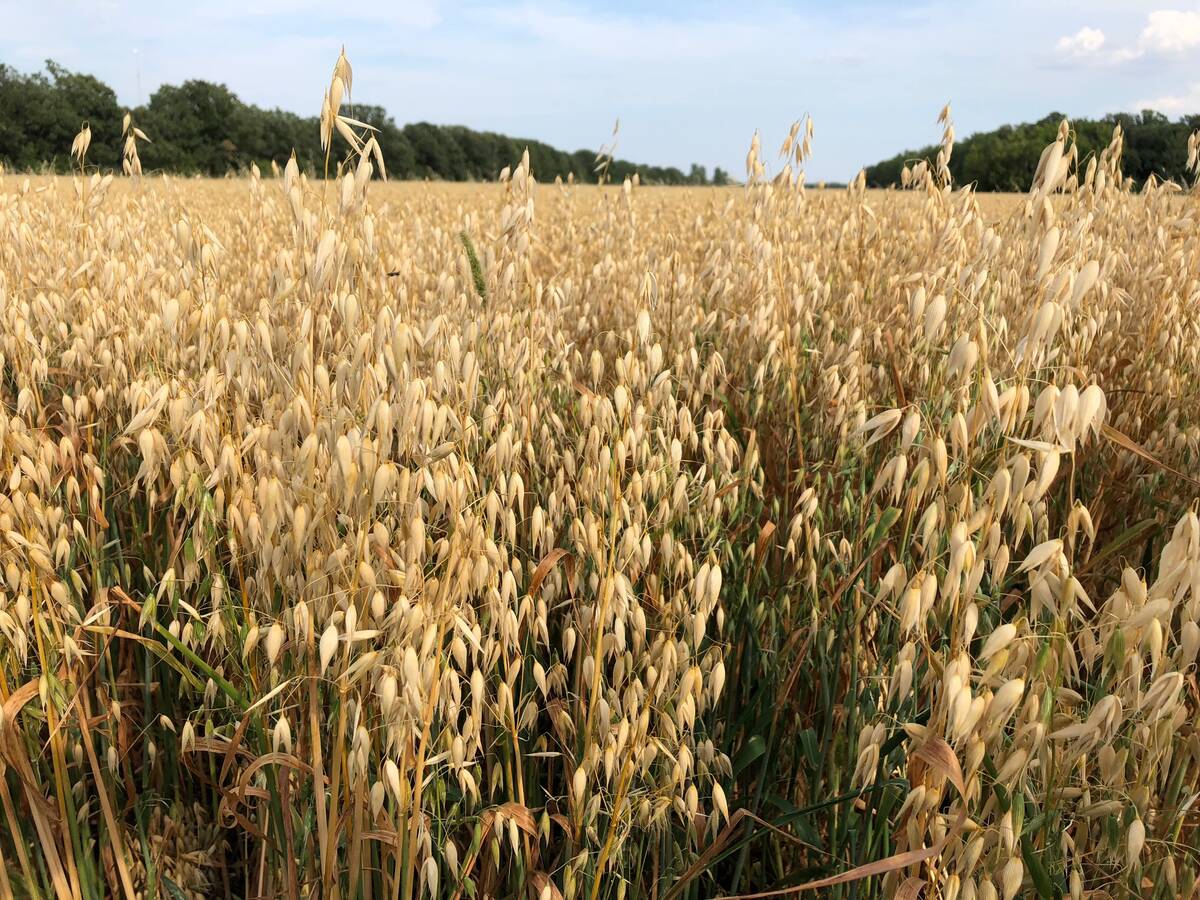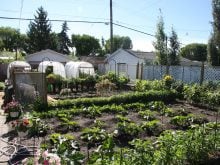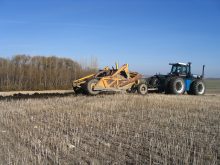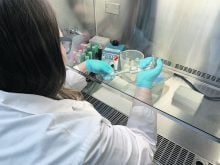I recall Roundup herbicide being sold for $60 per litre.
It was a celebrated win when the price dropped to $40 and then $30 per litre.
This was the 360 grams per litre formulation.
It was a déjà vu moment when I began hearing of $16 a litre of Roundup Transorb. A quick conversion to 360 grams per litre would equate to $24 per litre.
With the higher prices in mind, it may be time to remind ourselves of some of the ways we managed Roundup back in the day to try and get the maximum value out of the product.
Read Also

Controversy fails to prevent PGR use in oats
Some Manitoba oat growers are still using chlormequat chloride — the active ingredient in Manipulator —and sometimes to measurable success.
The first thing we can do is get back to using label rates. With the relative cheapness of the product over the past decade, we have become sloppy. Most farmers I have talked to use three-quarter or a full litre of 500 grams per litre glyphosate in their burn-off operation.
It is worth noting that the label rate for annual weed control (many of grassy and broadleaf species) is 110 to 145 grams per acre. This would equate to one-third or one-quarter of a litre of 500 grams per litre glyphosate. In other words, we have been applying three to four times the label rate.
Why? Firstly, it was cheap insurance. Secondly, farmers wanted to make sure they controlled some of the harder-to-control perennial weeds and winter annuals.
So, if a grower wanted to back down to a 110 to 145 grams per acre, what should he do to ensure adequate and consistent control?
First, read the label. At these reduced rates, many of the products suggest the addition of a surfactant like Agral 90, Agsurf II, Companion or LI700 be added to improve consistency.
Second, check the water quality. For years we have known that water quality can affect the performance of glyphosate. Good, clean water is important to maximizing the performance of glyphosate products. The poor performance in glyphosate herbicides due to poor spray water quality is preventable.
Water suitability for herbicide application is defined by a few parameters:
- Bicarbonates — a measure of the levels of bicarbonates in the water. Bicarbonates can reduce the effectiveness of dim herbicides in Group 1 (like sethoxydim, clethodim and tralkoxydim) and 2,4-D.
- Cleanliness or mineral content — water containing high levels of suspended silt or organic matter. These particles can bind with herbicides like glyphosate and diquat, reducing their effectiveness.
- Iron content — iron can bind with glyphosate and can also react with oxygen to produce crystals, which could plug spray screens and nozzles.
- Hardness — the sum of positively charged ions (cations), most often being calcium, magnesium, iron, and sometimes manganese and zinc. Glyphosate binds easily to cations, reducing the effectiveness of the herbicide.
When looking at your spray water, the following factors should be used to determine the suitability of a water source for use with glyphosate:
- Physical measure of salinity. Conductivity is also a measure of total dissolved solids. A high total dissolved solids level raises the risk of precipitates forming.
- Conductivity is measured in μS/cm
- The guideline for glyphosate is less than 500
- Units: visual assessment
- Glyphosate guideline: water should be free from suspended particles or organic matter. A slight yellow or green tinge is not expected to cause issues.
- Glyphosate rate: 0.33 litres per acre to 0.67 litres per acre
A water volume of five gallons per acre has a hardness limit of 700 parts per million
A water volume of 10 gallons per acre has a hardness limit of 350 parts per million
– A water volume of less than 10 gallons per acre is not recommended for hard water
- Glyphosate rate: greater than 0.67 litres per acre
– A water volume of five gallons per acre has a hardness limit of 700 ppm
– A water volume of 10 gallons per acre has a hardness limit of 700 ppm
– A water volume of more than 10 gallons per acre has a hardness limit of 350 ppm
The first step in managing water quality is to test the source of your spray water, particularly if you are using well or dugout water. If the results indicate the water does not meet the guidelines, you should find another source.
If another source is impossible or if your results are near the recommended levels, there are a few proactive steps you can take to improve the performance of your Roundup brand agricultural herbicide with hard water:
Use the maximum recommended rate of Roundup brand agricultural herbicide for the weeds you are targeting.
Ammonium sulphate (AMS) can be added to water to help soften it. AMS comes in two forms, liquid (8-0-0-9) and dry (21-0-0-24).
- Dry AMS (21-0-0-24) added at two percent weight/weight – two kilograms of dry AMS for every 100 litres of water.
- Liquid AMS (8-0-0-9) added at one percent volume/volume — One litre of liquid AMS for every 100 litres of water.
In dirty water, soil particles can tie up glyphosate, resulting in decreased control. Use clean water where possible. If soil particles or organic matter is suspended in the water source, try to filter the water before using it with glyphosate.
As a rule of thumb, any water that tests with 700 ppm hardness should not be used with glyphosate, regardless of water volume or spray rate.
The first step to managing spray water is to test your water. If it falls below the recommended guidelines, you can rest easy using that source.
If your water is above the recommended guidelines and is considered poor quality, implement the proactive steps. Spray water quality is a management issue within your control.
Water temperature may also affect control. Research suggests performance was significantly poorer when the spray water temperature was 5 C compared to 22 C. The actual lowest water temperature threshold recommended was not established.
The third factor to consider is weather. Fortunately, glyphosate performs well under a wide range of temperatures. You’ll see the best performance when temperatures are in the 16 to 24 C range and remain there for a few hours after application. At this temperature, most plants will be growing and not experiencing temperature stress. However, at burn-off time, we seldom have that ideal range.
When it’s colder than 15 C, plant growth slows, resulting in slower herbicide uptake and translocation. This is illustrated in the table. These low temperatures may increase the required rain-fast period, and slows down the onset of symptoms, however, overall weed control, especially of annual weeds, is not compromised.
In many years, we flirt with frost during burn-off applications. The impact that frost will have depends on the duration of the frost, the severity, preceding weather and the weed species being targeted. Generally, perennials, biennials and winter annuals will possess a higher degree of frost tolerance than spring germinating annuals.
A light frost of -2 C to -3 C will not usually harm a plant and spraying can resume later in the day if temperatures are forecast to climb to a minimum of 8 C for at least two to four hours after the application.
Heavier frosts with temperatures lower than -5 C can cause more severe damage to most plants, including perennials. Avoid spraying for one to two days to assess any injury that has occurred. If at least 60 percent of the plant is still green and actively growing, and daytime temperatures are forecast to reach at least 8 C, you can resume spraying.
Weeds that are under excess moisture or drought stress, disease or insect pressure will take longer to resume growth after a frost, so you may need to observe a longer interval.
A frost that occurs soon after an application of glyphosate (within 24 hours on annuals, or within three days on perennials) can also impact control.
If only a light frost is predicted, ensure at least a couple hours of above 8 C to allow the product to enter the plant. Once the temperature warms up the next day, translocation will resume.
If a severe frost is predicted immediately following your intended application, you may want to avoid spraying.
If the plant is damaged before the product has properly translocated, control may be reduced.
The fourth factor to consider are tank mixes that will improve glyphosate performance. This is particularly common when using it for pre-burn.
Products like Heat LQ, Conquer 2 or bromoxynil will add to the burn-off of annual weeds. If you want to use the lower label rates of glyphosate, the addition of these products will improve the burn-off and leave little residue.
In fact, Conquer and bromoxynil can be used before planting canola. They are non-selective so will help control all annual seedlings. They perform best when weeds are small.
A second group of tank-mixes provide residual control of annual weeds in addition to burn-off. These include flucarbazone, Authority, Blackhawk, Goldwing, Express, Express Pro Thunderhawk, and PrePass.
They will improve on glyphosate alone performance by picking up weeds that glyphosate alone may miss as well as providing residual weed control.
Spray volumes is the fifth aspect to investigate. Glyphosate tends to work better at lower spray volumes (five gallons per acre) than at high volumes, especially if water quality is a concern.
However, when you tank-mix with contact products such as like Heat LQ, Conquer 2 or bromoxynil, higher water volumes will become necessary. However, drift concerns increase at lower spray volumes.
Add recommended adjuvants only at low-use rates (less than 0.5 litres per acre) or high spray volumes (higher than 15 gallons per acre).
Finally, know your target weeds. This includes knowing the species, the growth stage and whether it is an annual, winter annual or perennial.
Generally speaking, for annuals in a burn-off operation, grassy weeds such as green foxtail, wild oats and volunteer cereals and broadleaf weeds like lady’s thumb, stinkweed, wild mustard and volunteer canola (non-Roundup Ready) are most easily controlled. Weeds such as downy brome, Persian darnel, Canada fleabane, cleavers, hemp nettle, lambs-quarters, narrow-leafed hawk’s-beard, redroot pigweed, Russian thistle, volunteer flax and wild buckwheat are considered even more difficult to control and would require a higher rate or the addition of a tank-mix partner.
Annual sow-thistle, kochia and shepherd’s purse prove to be some of the most difficult weeds to kill with glyphosate in a burn-off situation. All the above weeds will be more easily controlled when they are young.
OK, it’s complicated, which is why so much glyphosate was applied at higher rates than necessary. However, looking at these points and adjusting your glyphosate rates with this knowledge will save you money and still provide effective weed control.
















